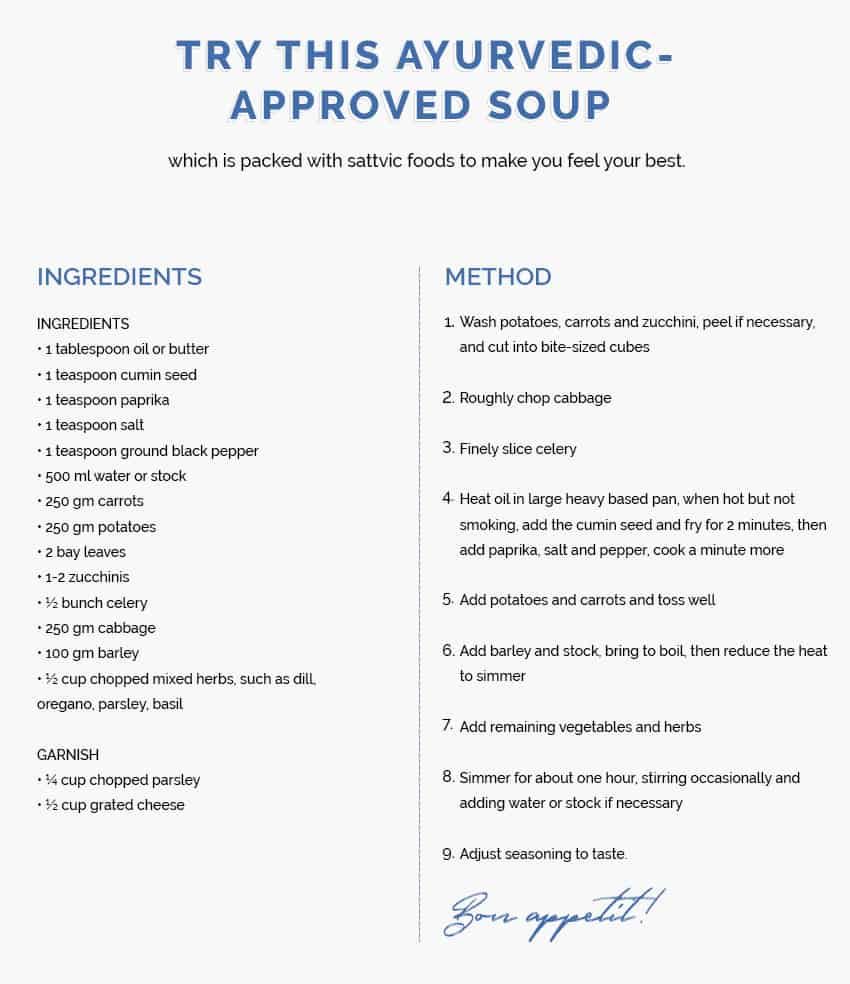
We all know the saying “you are what you eat” and whilst we usually apply this to our physical health, did you know it’s even more applicable to our mood and mindset?
Everyone has a different relationship with food and you’re probably aware of how food fits into your life (we obviously love everything about it) but there’s a greater force surrounding food and how we consume it.
According to Ayurveda (meaning “the science of living”), the process of eating is life giving, reverent and important for the development of our mind as well as our physical health. Ayurveda is an Indian health practice thought to be more than 5000 years old and consists of a number of disciplines, including aromatherapy, diet, herbal medicine, acupuncture, yoga, massage and meditations.
There are numerous practices related to eating that ensure a clear and positive mindset and mood.
Essentially, the Ayurvedic guide to eating is based on balancing our bodies. In Western culture, it’s easy to eat too much sweet, salty and savoury food that can create imbalance within us so the Ayurvedic guide to eating is based on eating foods in a way that fulfil us from within.
Here’s the Ayurvedic guide to eating for a positive mindset full of clarity and joy!
- Always sit down when eating because it’s easier to digest food when you’re in a relaxed posture.
- Avoid cold drinks at mealtime. Try room temperature or heated drinks, including herbal teas.
- Eat at the same time each day
- Lunch should be your largest meal of the day and dinner should be a lighter meal than lunch and should be eaten before 8pm.

Your brain’s health is connected to so many different things within your body, from your diet and gut health to sleep patterns and brain chemistry. Food plays a critical role in your mood and based on the Ayurvedic guide to eating, there are three types of food. Sattvic foods create joy and mental clarity, tamasic foods create lethargy and dullness and finally, rajasic foods create movement in the mind.

Sattvic foods are the foods you want to add to your diet (we’ve listed these below) whilst tamasic foods are to be avoided because they promote tiredness and slowness. Tamasic foods include fast, frozen and fried foods, alcohol, onions, margarine and microwaved foods.
Rajasic foods are a little more complicated because they have the ability to push and invigorate us. They can be mentally stimulating and can promote activity but they can also stimulate aggression and an imbalance of emotion. Rajasic foods include hot spices (like chilli and pepper), lemon, tea, coffee and eggs.
Therefore, it’s important to eat as many sattvic foods as possible because they are nutrient-dense, pure and light, which consequently can improve your mood and mindset.
If you want to have a better relationship with your food and to improve your digestion, add some more sattvic foods to your diet. These can include:
- Organic fruit and vegetables
- Some grains, like oats, quinoa and basmati rice
- Legumes
- Nuts and seeds, including almonds, sesame and sunflower seeds
- Organic dairy
- Oils such as sesame oil, organic ghee and cold-pressed olive oil
- Sweetener such as raw, unheated honey. Only eat sugars in small amounts.
- Mild spices such as turmeric and ginger
- Room temperature or heated drinks
The above list certainly isn’t exhaustive or unattainable and we can definitely see how consuming the above foods can help to improve one’s mood and mindset. As with anything, changes won’t happen overnight but with time, you’ll be able to see how the food you consume manifests on the mind, leaving you to feel calm, creative, clear-headed and joyful.




